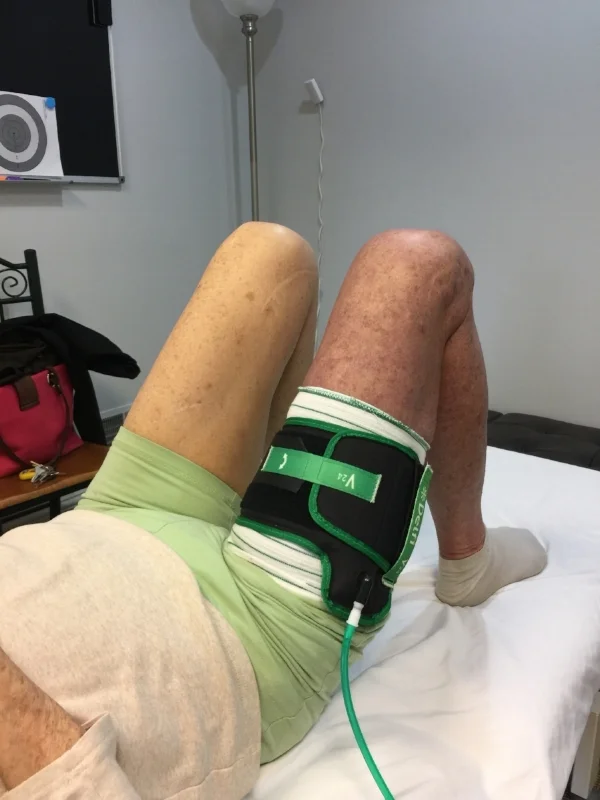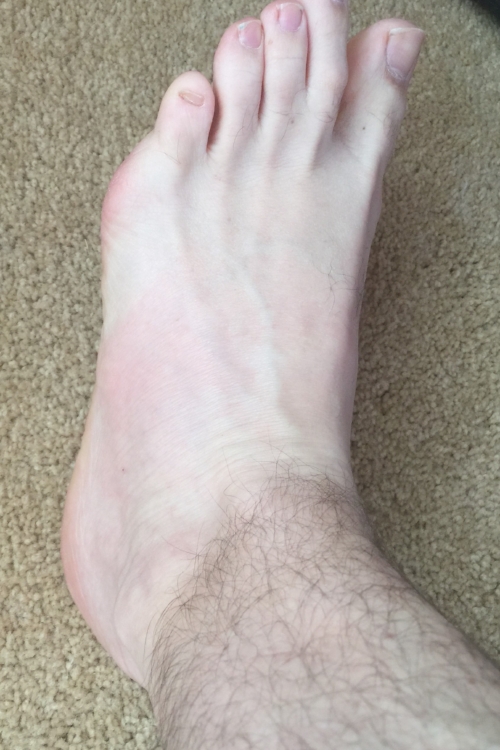In last week’s blog post we discussed that icing and following the RICE (rest, ice, elevation, and compression) protocol, while wildly popular, is not the best way to treat the pain and inflammation of an acute injury. Icing or following RICE is very effective at providing pain relief; however, it is likely delaying your recovery.
So, what should you do?
To recover the fastest from acute injuries, it turns out an active recovery is the answer.
So out with RICE and in with the MEAT! (Sorry vegetarians and vegans.)
MEAT stands for Movement, Exercise, Analgesia, and Treatment. It has been proposed as the optimal approach for managing acute injuries. 1
So, lets break MEAT down like a low and slow smoked brisket…
Movement:
There’s a couple saying from the NOI group—“movement is medicine” and “motion is lotion”. Instead of resting an injury, moving the damaged area through a full range of motion that is pain free. First gentle movement generates a muscle contraction, this a propulsive force necessary to move lymph (swelling) throughout the body. The lymphatic system largely mirrors the circulatory system; however, it does not have an active pump (the heart) to move fluid. It is passive and relies on contraction of the muscles or “muscle pumps” to function normally. When you’re fully resting an area there’s no muscle pump and swelling more readily accumulates. Another benefit to movement, the pain-free movement (and later exercise) does some interesting things with the nervous system which decreases pain and the perceived threat surround the injury. Basically, the more you move it in a pain-free manner the better you’re going to feel, and the more you expect it to feel better… which makes you feel better. It’s a nice positive feed back loop!
Exercise:
Gentle exercises should be the next progress. It increases circulation to the area. More blood equals more oxygen and nutrients to the injured tissue. That equates to faster recovery. Additionally, movement and exercises introduce a gentle amount of stress into the injured tissues. That stress or load, helps trigger new tissue grow and ensure the new tissues are formed in an organized manner, increasing their strength along the direction of tension. That equates to a better recovery. A recent study on amateur athletes with severe muscle injuries found that those who started early therapeutic exercises (2 days after injury) recovered on average 3 weeks faster than those who vs delayed exercise (9 days after injury). 2
Analgesia:
Analgesia is a fancy word for pain relief. Pain limits one’s ability to efficiently move an injured area through a full range of motion or engage in exercise, so addressing pain to allow as much movement as possible is key. Pharmacologically, NSAIDs (nonsteroidal anti-inflammatory drugs) like Ibuprofen, Aleve or Advil, are commonly taken for pain management. But NSAIDS alone do not expedite recovery and could be delaying it as they—by name-- disrupt the inflammation which is part of the body’s natural healing process. Tylenol is also commonly used. Tylenol is not an NSAID and will not disrupt prostaglandin synthesis; however, Tylenol and the liver do not play nice with one another. Additionally, both Tylenol and NSAIDS can cause gastrointestinal issues even if taken as recommended. Therefore, it is always a good idea to discuss medication use with your physician! But pain relief comes in many other forms. Topical analgesics like biofreeze, Ben Gay, Tiger Balm, etc), massage therapy, and the application of heat are other good options for temporarily decreasing pain to allow you to better move an injured area and participation in exercise.
Treatment. This is a broad category that consists of treating the individual injury using a variety of therapeutic approaches—e.g. physical therapy. Specific prescribed therapeutic exercise and activities are the cornerstones of treatment for acute injury. And there’s a myriad of complementary therapeutic interventions which relieve the pain of acute injuries, augment the therapeutic exercises, and expedite recovery: soft tissue mobilization, joint mobilization or manipulation, dry needling, electrical stimulation, H-Wave NMES, and blood flow restriction rehabilitation.
We’ll talk more about those in the coming weeks! But if you’d like to know more just give me a call at 231-881-9770!
So MEAT in summary is: do what you can to decrease the pain (but not ice), so you can begin moving the injured area as much as possible without causing pain, then begin exercises and therapy ASAP!
References:
1. Campbell, Ryan. (2013, December) Goodmed Direct Primary Care. Retrieved from https://goodmedclinic.com.
2. (PDF) Early versus Delayed Rehabilitation after Acute Muscle Injury (researchgate.net)










